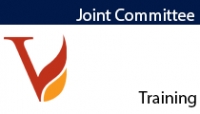Joint Training Committee 2 Minute Briefing
Issue 6, 11 August 2013
Quick snapshot of the priority issues and actions worked through at the most recent Joint Committee meeting between CFA and VFBV. (Meeting held 11/08/2013)
WHO CAN TRAIN & ASSESS – CLARITY BY CHIEF OFFICER & OTV
In an article published in the August edition of the Fireman, the Chief Officer and Lex deMan have issued a clear directive to all members of the Chief Officer’s and CFA’s intent for the delivery of training and assessment to volunteers, particularly a clarification and re-affirmation of the advice to all members contained on the ‘Who Can Train & Assess’ poster distributed widely in 2012. Raised as a question at VFBV’s Open Forum in July, both the Chief and Lex in their Fireman article have made it abundantly clear that there is a clear distinction between Skills Maintenance and Skills Acquisition and that the responsibility for the delivery and conduct of routine and skills maintenance training in Brigades lies with the Captain / OIC. This simply means that any member who has the confidence and endorsement of the Captain/OIC and who holds the competency and experience to do so, can deliver and facilitate training at Brigade level.
Equally in the provision of foundation skills (minimum skills), while acquisition training, where appropriate mentoring is in place, brigades are able to conduct their own training under the approval of the Brigade Captain /OIC. There are specific requirements for the assessment of skills acquisition courses and these rules provide consistent application of training outcomes ie everyone is assessed against a standard and qualifies based on merit. Members should read the August Fireman article for further details.
_____________________________________________________________________
CREATING OUR FUTURE TOGETHER – TRAINING
Recently the Fire and Emergency Management (F&EM) Strategy was approved. CFA aims to unify the
operating model and the way we work to ensure the most effective and efficient service delivery is
established and achieved.
Guiding Principles The following principles guiding CFA training are designed to assist with standardisation across the state;
- Empower brigades, groups and districts by giving them ownership of their own learning through
increasing volunteer and staff capacity to deliver and assess training.
- F&EM at a district level will be responsible for determining the training and planning needs within a
district (includes brigades, groups, and catchments).
- OT&V at a district/ region level will be responsible for the coordination and delivery of training to
brigades, groups and catchments.
- OT&V at a state level will be accountable for the provision of training services to districts and
provision of standardised systems and application of frameworks, procedures and processes across
the state.
- Further develop the use of technology in the design and delivery of training.
- Ensure we have training infrastructure that is accessible to all both mobile and fixed.
- Greater focus on the development and monitoring of our training management systems to ensure
quality and standardisation of outcomes.
- Develop operational support capacity within the OT&V Structure.
Proposed changes OT&V are proposing:
- To refresh the OT&V service delivery model, taking into consideration member feedback and comments provided.
- CFA’s aim is to implement this throughout 2014 and have a consistent and standardised approach in every district for the planning and delivery of training and assessment.
- To operate CFA service delivery across regions and districts.
- A training services function that would be based regionally and work with operational leaders at a regional level.
- To create the role of Senior Instructor to work across districts.
- To centralise some aspects of current business (for example: first aid bookings, data entry and regional training finance).
- To have greater connectivity to FE&M service delivery, with Operations determining the training needs and OT&V delivering to their specifications.
Members are encouraged to discuss the directions for Training and the impact of the proposed changes.
 News
News 
